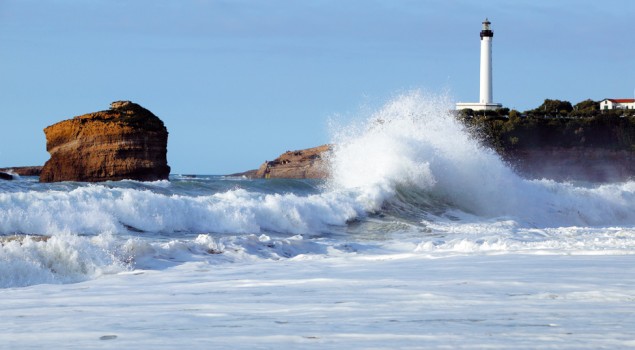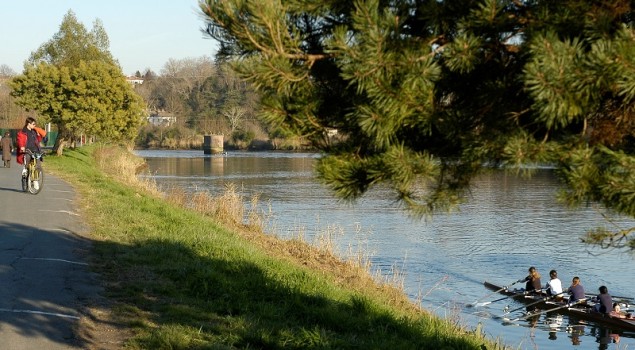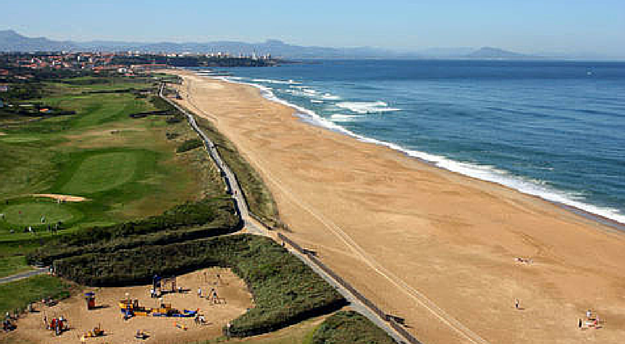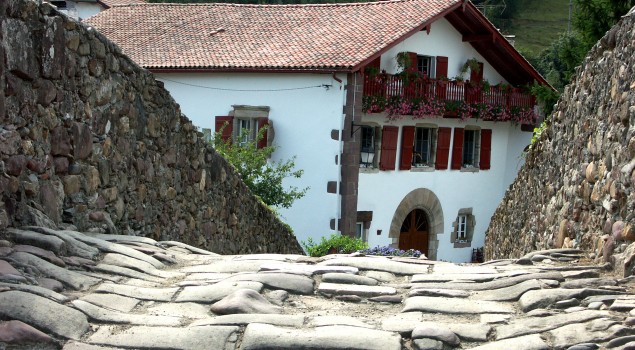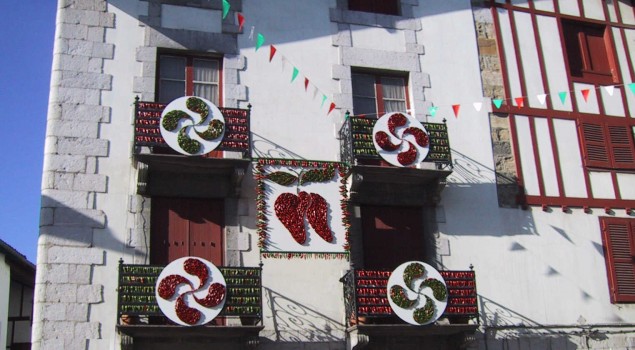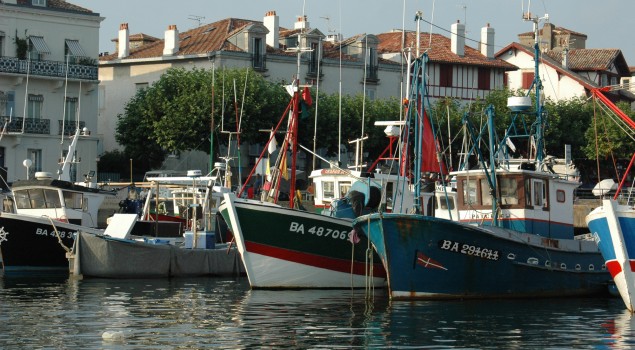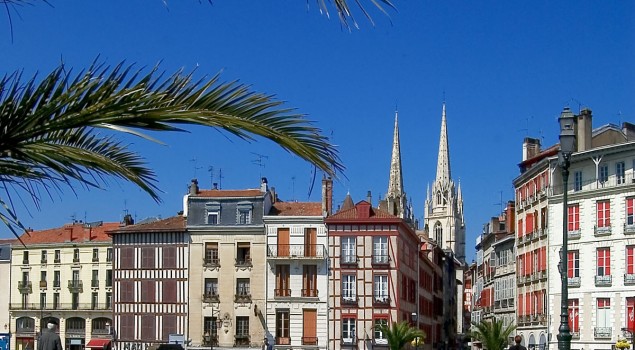Bayonne is the ideal base to explore the original world of the Basque Country!
Whether or not you have your own transport, there are easy half-day, or day trips, to be made into the hinterland and foothills of the Pyrenees or else along the coastline to the resorts.
One of the most beautiful bicycle rides in the region follows the old tow path, upstream from Bayonne, along the Nive river. Five minutes from the departure point in front of the Aviron Bayonnais rowing club and the river valley opens out to the countryside. The path is a peaceful and easy ride to the town of Ustaritz (15 kilometres). Relax with a picnic by the riverside followed by a gentle trip back. The sight of the spires of the Bayonne cathedral around the last river bend, could be mistaken for an English pastoral scene…
For those keen on the beaches, follow the cycle path down the left bank of the Adour river to the coastline at Anglet and, for the energetic, all the way to Biarritz.
For those less energetic (you’re on holiday after all) an easy and inexpensive way to Biarritz is by using the “Chronoplus” bus company with departures every 10 or 15 minutes from Bayonne with the A-1 and A-2 lines. Only one euro – a bargin!
A delightful train ride can be made from the Bayonne railway station up the Nive valley to the market town of Saint Jean-Pied-de-Port (a 50 minute trip, following the completion of a major upgrade of the line, due for completion in October, 2015)). The railway line follows the gorges of the Nive river and winds its way through the foothills of the Pyrenees. Saint Jean-Pied-de-Port has its own distinctive architecture and is a famous stop-over for pilgrims on their way to Compostella – an ideal day out!
If travelling by car, the best circuit to discover the most beautiful Basque villages is to drive first to Cambo-Les-Bains (20 minutes from Bayonne) where a “not-to-be missed” visit is the domain of Arnaga, the former home of the playwright, Edmond Rostand (“Cyrano de Bergerac”) with its beautiful French gardens. From Cambo follow the directions to the nearby village of Espelette, the home of the famous red peppers (“piment d’Espelette”), then to Ainhoa, listed as one of Frances most beautiful villages. Ainhoa is minutes away from the border with Spain and the crossing point of Dancheria is an important shopping spot for “goodies” from Spain.
The following village is Sare, with some of the most beautiful Basque farm-house style architecture in the region. From the village, drive up to the “Col de Saint Ingace” and the station of the rack and pignon railway which climbs La Rhune mountain (905 metre high). The ride takes 35 minutes and once up on the border, there are superb views overlooking both the northern and southern Basque Country.
From the station a country road drops down to the 17th century Basque farmhouse of “Ortillopitz”, open to the public with guided visits and an excellent and authentic historical insight to Basque rural and cultural life.
The route continues to the village of Ascain and then back to the coast at the beautiful fishing port and beach resort of Saint Jean-de-Luz. This natural harbour is a superb site, particularly the old quarter of the town with the architecture of the former ship-owners homes (notably the “Maison de Louis XIV”, open to the public for visits) and the church of Saint Jean, one of the most impressive in the Basque-style in the area. This was where the young Louis 14th married his Spanish bride in 1660.
The return drive to Bayonne includes Biarritz, made famous by the holiday visits of Napoleon III and his Spanish wife Eugenie. The coast here is spectacular and is ideal for a day on the beach.
The great interest in the four major townships mentioned in this blog (including Bayonne) is that each is completely different from the others. They all have various historical origins, individual architecture and character and play different roles in the region today.
Using Bayonne as a “jump-off” point, the countryside is easily accessible with the Pyrenees close-by, the beaches minutes away and the rich and diverse Basque heritage and culture, all within reach.
In fact, there is no need to even leave Bayonne at all! Take time for an excellent introduction by visiting the town’s “Musée Basque” on the quayside of the Nive. This early 17th century building houses the most important museum of Basque history and culture as well Bayonne’s heritage. There are two guide formulas in English, to take you around – a simpler booklet version and also a more in-depth document which not only presents the most important displays but which also gives a general introduction and information concerning the themes of Basque life and history.
For all information, particularly about transport, contact the Bayonne Tourist Office, (from overseas / 00.33.559.46.09.00. and within France : 05.59.46.09.00).
Happy travels !!!!

